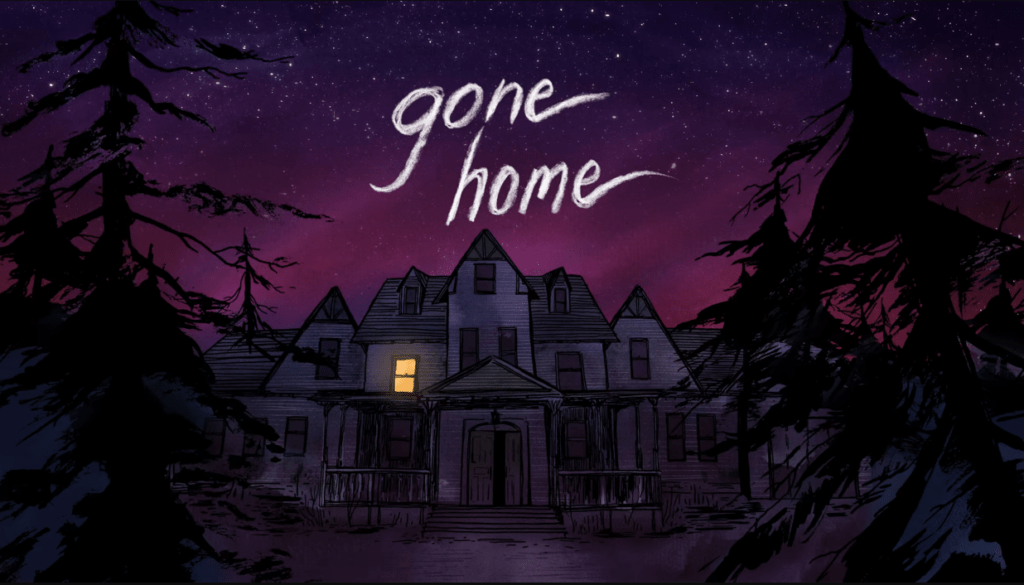
gone home is a first-person mystery walking simulator where you play as college student Katie who comes home from studying abroad only to find a deserted house in the middle of a severe storm in the 90s. gone home was originally released by The Fullbright Company in August 2013 as a PC game, and is now available in virtually any platform. I decided to play it on my Nintendo Switch so I could be further immersed into the story as I cradle the machine in my hands as it is a first-person game.
When the game first starts up, the user has to pick their play settings which includes starting with all the doors unlocked and/or the lights in the house on. From the jump, I understand this is not meant to be a scary or anxiety-producing game. The emphasis is on the narrative and sense of discovery so the developers make sure there is a way for all users to experience that. This makes the game ideal for people who enjoy mysteries and the concept of spooky things but are faint of heart. The narrative is also really cool for anyone who is queer and accidentally stumbling onto a queer narrative is always welcomed :).
The game has basically no instructions and there is no linear story progression you need to follow. This allows the developer to force the user to capitalize on discovery and experience the embedded story line. Whenever the user touches something that has significance to the narrative, Katie’s sister Sam voiceovers the next part of the narrative. The player becomes familiar with the interaction loop of picking up things that may be important. At first then can show as the player picking up anything they can to see if is important. As the mental model updates, they have a better sense of an item should be picked up or not and some more thought goes into it. I found myself wanting to just make story progression at some point so I looked only for things I think would belong to Sam. Whenever I was right, I get a new voiceover and journal entry as a reward! Some things are hidden in quirky places like panels and secret passageways. All this just makes the game more exciting and true to its nature as a ~mystery~.
Through discovery, the narrative keeps getting pushed further which is typical of games of this nature. What is unique are the multiple plot lines actually happening – if the user pays enough attention they will discover that the mom is having an affair, their dad is a conspiracy book writer, their grandfather disapproves of their father, and about the former owner of the house. All these other interaction arcs are a cool way to help “fill” the game. The game never calls attention to these other plot lines and it is totally reliant on the user to notice. This reliance on deduction and self-guidance puts the user as the detective and forces them deep into the mystery.
gone home deserves all the praise it receives as it does a wonderful job of utilizing its genre structure in service of the mechanics and loops of the game. Mysteries and walking simulators go great together. The only thing I would change is to have some kind of marker on the map to understand where you are or for the game to briefly flash what room you are in because I can see how someone can get lost in the house.



